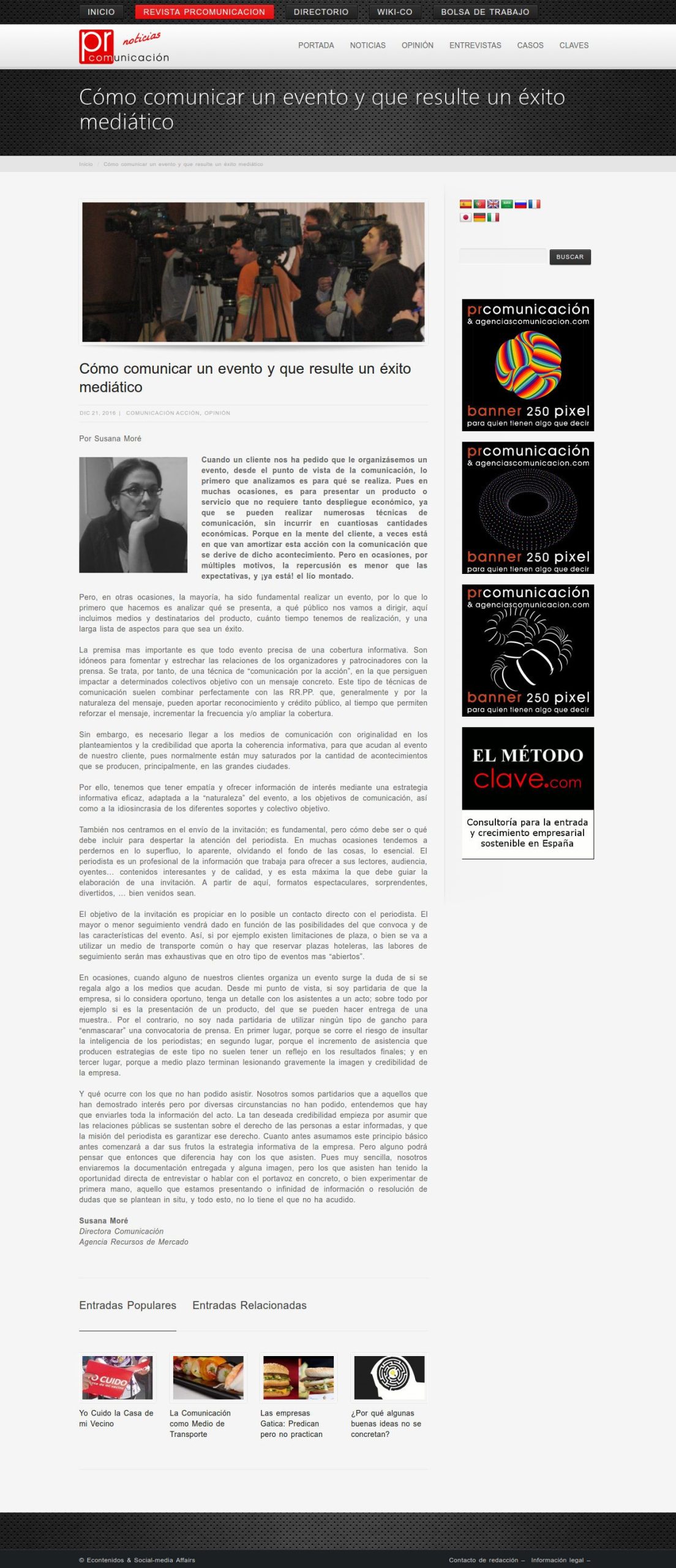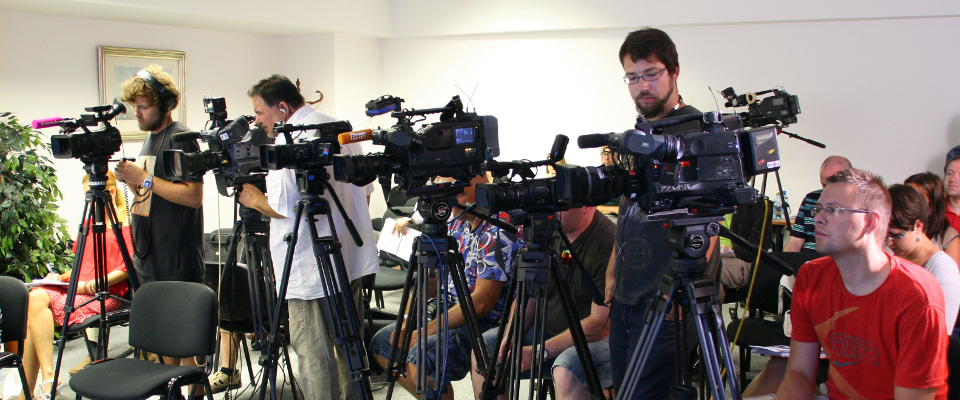When a client has asked us to organise an event, from a communication point of view, the first thing we analyse is the purpose of the event. Well, on many occasions, it is to present a product or service that does not require so much economic deployment, since numerous communication techniques can be carried out without incurring large economic amounts. Because in the client’s mind, sometimes the idea is that they are going to amortise this action with the communication that derives from this event. But sometimes, for multiple reasons, the repercussion is less than the expectations, and that’s it! The mess is made.
 But, on other occasions, most of the time, it has been essential to organise an event, so the first thing we do is to analyse what is being presented, what audience we are going to address, here we include the media and the target audience of the product, how much time we have to carry out the event, and a long list of aspects to make it a success.
But, on other occasions, most of the time, it has been essential to organise an event, so the first thing we do is to analyse what is being presented, what audience we are going to address, here we include the media and the target audience of the product, how much time we have to carry out the event, and a long list of aspects to make it a success.
The most important premise is that every event needs press coverage. They are ideal for promoting and strengthening relations between organisers and sponsors and the press. It is, therefore, a technique of “communication by action”, in which they seek to impact certain target groups with a specific message. This type of communication technique often combines perfectly with public relations, which, generally and by the nature of the message, can bring public recognition and credit, while reinforcing the message, increasing frequency and/or extending coverage.
However, it is necessary to reach the media with originality of approach and the credibility that comes from informative coherence, so that they will attend our client’s event, as they are normally very saturated due to the number of events that take place, mainly in large cities.
Therefore, we have to be empathetic and offer information of interest through an effective information strategy, adapted to the “nature” of the event, to the communication objectives, as well as to the characteristics of the different media and target groups.
We also focus on the sending of the invitation; it is fundamental, but how should it be or what should it include in order to attract the journalist’s attention. On many occasions, we tend to get lost in the superfluous, the apparent, forgetting the bottom line, the essential. Journalists are information professionals who work to offer their readers, audience, listeners… interesting and quality content, and it is this maxim that should guide the preparation of an invitation. From this point on, spectacular, surprising, amusing formats… are welcome.
The aim of the invitation is to encourage as much direct contact with the journalist as possible. The degree of follow-up depends on the possibilities of the inviting party and the characteristics of the event. For example, if there are limitations on the number of places available, or if a common means of transport is to be used, or if hotel reservations have to be made, the follow-up work will be more exhaustive than for other types of more “open” events.
Sometimes, when one of our clients organises an event, the question arises as to whether or not to give something away to the media who attend. From my point of view, I am in favour of the company, if they consider it appropriate, giving a gift to those attending an event; especially, for example, if it is the presentation of a product, of which a sample can be given. On the other hand, I am not at all in favour of using any kind of hook to “mask” a press invitation. Firstly, because there is a risk of insulting the intelligence of journalists; secondly, because the increase in attendance produced by strategies of this type are not usually reflected in the final results; and thirdly, because in the medium term they end up seriously damaging the image and credibility of the company.
And what happens to those who have not been able to attend. We are in favour of sending all the information about the event to those who have shown interest but for various reasons have not been able to attend. The much-desired credibility begins with the assumption that public relations is based on the right of people to be informed, and that the journalist’s mission is to guarantee that right. The sooner we accept this basic principle, the sooner the company’s information strategy will begin to bear fruit. But some may ask, what difference does it make to those who attend? Quite simply, we will send the documentation provided and some images, but those who attend have had the direct opportunity to interview or talk to the spokesperson in particular, or to experience first-hand what we are presenting or a great deal of information or resolve doubts that arise at the current moment, and all of this is not available to those who did not attend.
Susana Moré Torres
Recursos de Mercado Communications Director
Published on 21 december 2016 by the magazine:




